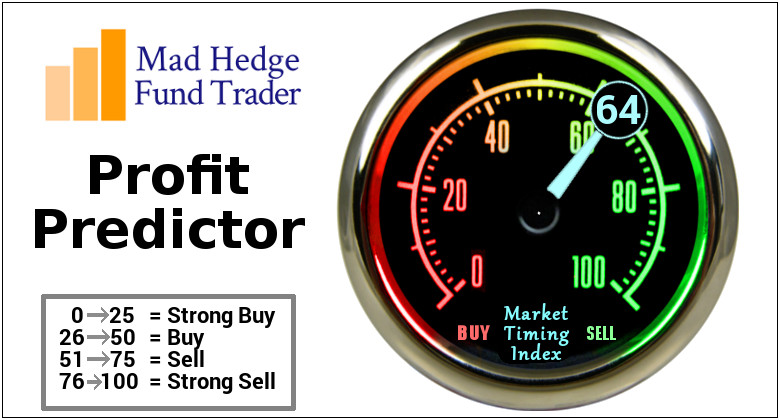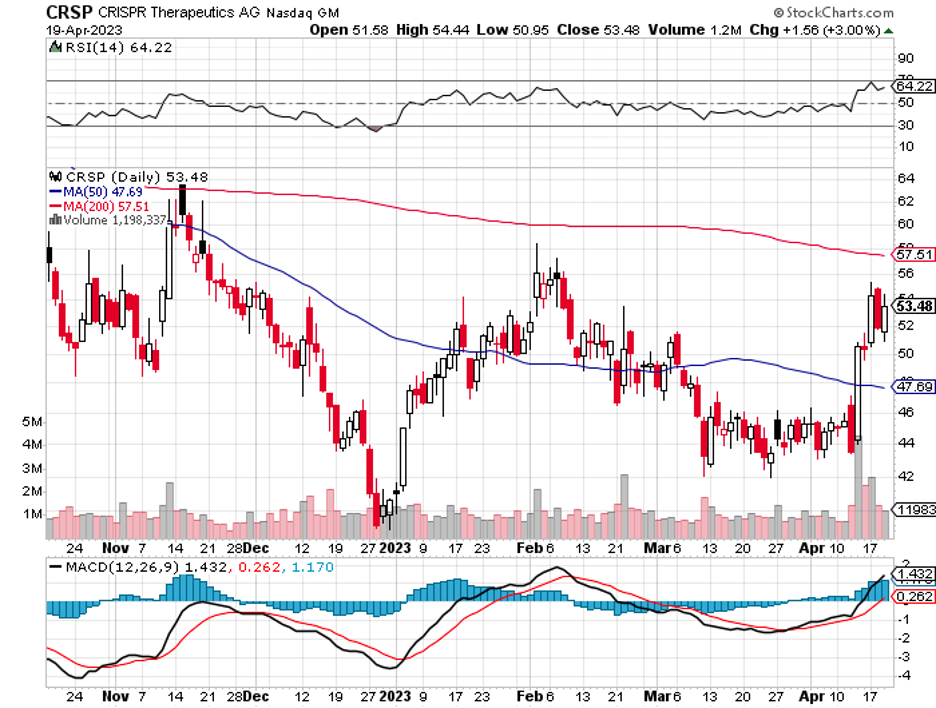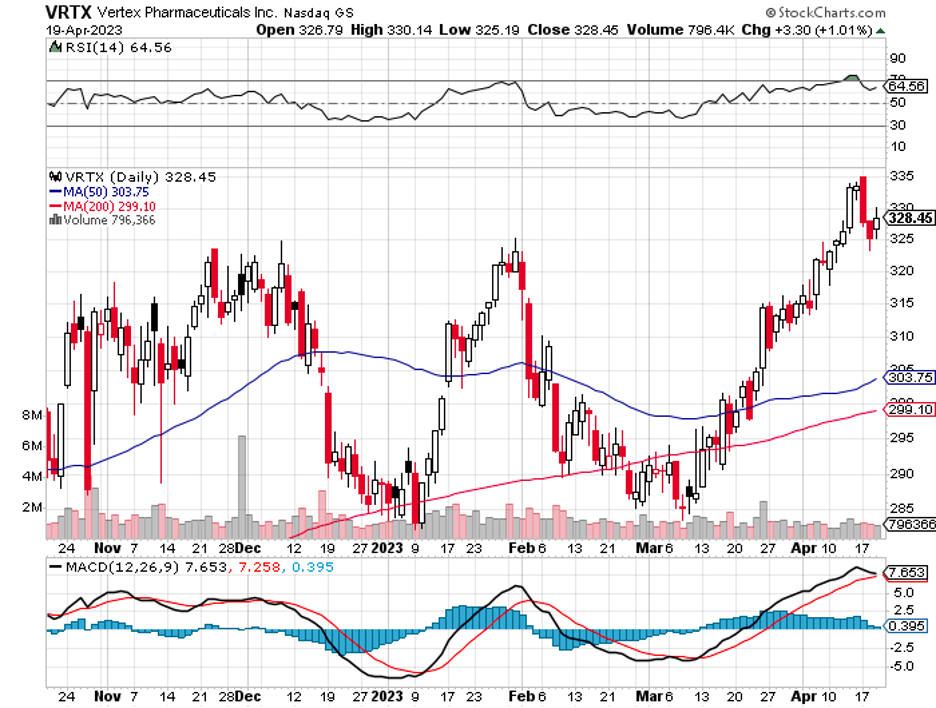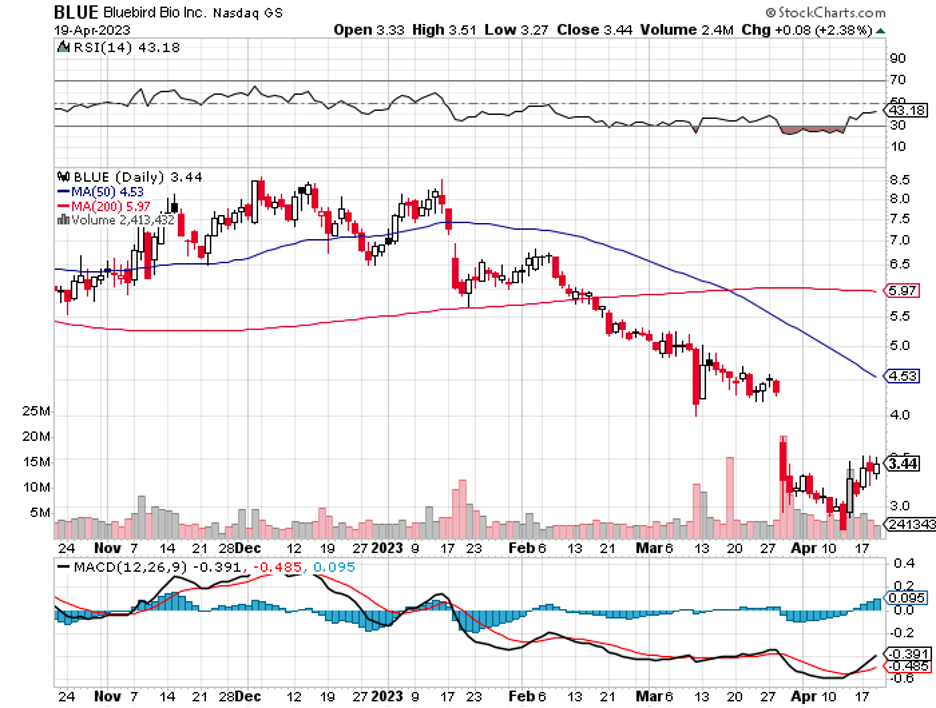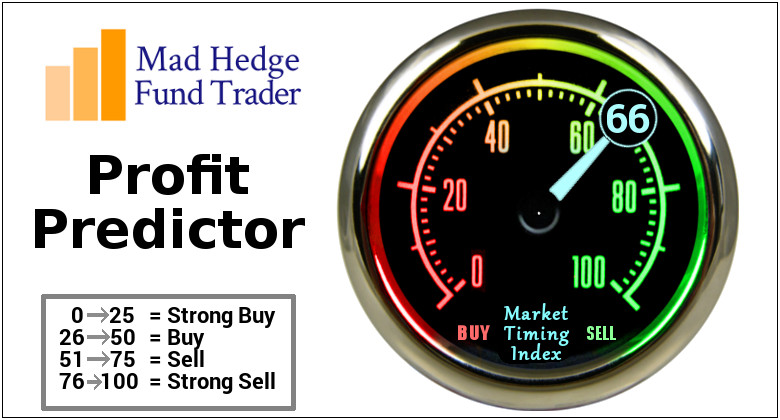When John identifies a strategic exit point, he will send you an alert with specific trade information as to what security to sell, when to sell it, and at what price. Most often, it will be to TAKE PROFITS, but, on rare occasions, it will be to exercise a STOP LOSS at a predetermined price to adhere to strict risk management discipline. Read more
Global Market Comments
April 21, 2023
Fiat Lux
Featured Trade:
(THURSDAY, MAY 18, 2023 TAMPA, FLORIDA STRATEGY LUNCHEON)
(SOME BASIC TRICKS FOR TRADING OPTIONS)
CLICK HERE to download today's position sheet.
I have spent the past 15 years teaching investors how to trade options. This is more important than ever now that the hedging of options accounts for more than 50% of all stock market daily volume. See yesterday’s research piece about “Buy Writes.”
Those who get it make millions, and this year in particular seems to have produced a bumper crop of new fortunes.
It’s really not all that hard, as I know many who are complete dummies on all other matters but earn a decent living trading options. All they need is to follow a few valuable rules that have stood the test of time.
I could add to this list as I possess additional skills and experience that other options traders lack, but the ten tips below are a great start.
After practicing for 55 years, it starts to get easy.
Needless to say, following the Mad Hedge Fund Trader is crucial in best obtaining the correct timing in implementing these rules.
1) Have an investment thesis. Know why you are doing what you are about to do. Focus on events like earnings reports or product launches and try to figure out how the underlying stock might react. Aim not where the puck is, but where it is about to go.
2) Use your research on the stock to decide whether you will buy or sell a call or put option. Don’t delude yourself into thinking you have an educated view of options contracts until you have traded for a while and understand how the stock and options markets work with each other.
3) Focus on options that expire in three months or less. The sweet spot for many investors is about 30 to 45 days, which is enough time to benefit from accelerated time decay (more on that later) and for your stock thesis to work itself out without paying top dollar.
4) Before you buy or sell options, divide the contract’s implied volatility by 16. This will tell you what the options market thinks the stock will do each day through expiration. If the call has an 80% volatility, the call is priced as if the stock will move 5% each day until expiration. If you think the stock will move more, buy the contract, If, you think it will move less, sell the contract. The Rule of 16 is a powerful tool.
5) Good trading is about understanding events and how they are packed into your expiration. Understand everything that could happen to move the stock during your chosen expiration cycle, such as earnings reports, and anything that could move the entire market, like Federal Reserve meetings, elections, and economic reports.
6) Options contracts lose a little value each day. Time decay, or “theta,” is a powerful force that can be monetized by options sales. It’s also the reason that many investors try to trade options that expire in under a month. No one wants to pay a time premium, which you can think of as the inventory carrying cost for owning options. Get time decay right and it’s like having a rich uncle write you a check every day.
7) If you are thematically confident about a stock but unsure of the timeline, many institutions buy options that expire in a year or more to rent exposure to the stock, otherwise known as LEAPS (Long-Term Equity Anticipation Securities). If the stock goes up, the call goes up. If the trade fails, options always cost less than the associated stock, which means that options, when well used, help investors limit risk and enhance returns.
8) Don’t be a pig. If you make 50% or more on your initial trades, take profits. If you make 100% or more, definitely take profits. If you are so convinced that the market is wrong and you are right, take out your initial invested capital so you are playing with house money.
9) Be afraid of excess leverage. One options contract represents 100 shares of stock. Don’t trade 10 contracts if you cannot afford to cover 1,000 shares of stock. All beginners should trade one contract at a time until they develop some mastery of basic trading rules. Never trade “naked” contracts that aren’t covered by cash or stock.
10) Simplicity is everything. Avoid strategies with many moving parts. Many seasoned options traders focus on hitting singles and doubles, creating significant income for themselves. Master buying a call and put and selling a call and put, and then consider spread strategies. Complicated strategies like iron condors and butterflies sound great, but usually make more money for the brokers than you.
When in doubt, remember: Bad investors think of ways to make money. Good investors think of ways to not lose money. The goal is to pay for your own yacht, not your broker’s.
It’s Just a Matter of Learning a Few Tricks
“It’s not always the troops that storm the beaches who are the right ones to set up the government,” said Steve Vassallo from Foundation Capital about the resignation of founder Travis Kalanick from Uber.
Mad Hedge Biotech and Healthcare Letter
April 20, 2023
Fiat Lux
Featured Trade:
(ANOTHER WILD RIDE IN BIOTECH)
(CRSP), (VRTX), (BLUE), (MRK), (MRNA),(RXDX)
The biotech industry is a rollercoaster of investment opportunities, where great successes and flops can easily be the difference between riches or ruin.
Companies like Moderna (MRNA) have seen this firsthand - going from a $4 billion valuation to nearly 15-fold that amount in just one successful drug launch resulting from their COVID vaccine development program. To rekindle investor interest in what may seem like an erratic space, giants such as Merck (MRK) are also putting money into promising companies; with its recent acquisition of Prometheus Biosciences (RXDX) evidence enough that even long-established pharmas recognize the potential rewards available within biotechnology markets.
Investors seeking the next big win in biotech should look beyond household names for potential gems.
Take CRISPR Therapeutics (CRSP), whose collaboration with Vertex Pharmaceuticals (VRTX) is taking exa-cel to new heights, and Bluebird Bio's (BLUE) progress on lovo-cel as just two examples of lesser-known science ahead of its time that could pay off handsomely in your portfolio.
Recent news shows that two upcoming treatments for sickle cell disease, exa-cel and lovo-cel, could be cost-effective if priced below $1.9 million - a figure the Institute of Clinical and Economic Review (ICER) concluded after conducting an extensive assessment of their financial aspects. Momentum is building as both companies aim to secure FDA approval soon; investor optimism in CRISPR continues to grow increasingly evident due to this good news.
Here’s a quick recap of the treatment’s market opportunity.
Sickle cell disease and thalassemia patients face a hefty financial burden over their lifetime, with disease-related expenses ranging from $4 million to $6 million.
As a gene-editing therapy, exa-cel is a complex treatment to manufacture and administer, which further justifies its potentially high price tag. With this innovative therapy, Vertex Pharmaceuticals and CRISPR Therapeutics aim to target 32,000 sickle cell disease (SCD) and thalassemia (TDT) patients in the United States and Europe, emphasizing the significant market opportunity for the companies.
The potential market for exa-cel, assuming a price point of $2 million, amounts to a staggering $64 billion opportunity.
While this price tag may seem steep, it is not unprecedented in the industry. Bluebird Bio, for instance, secured approval for its gene-editing medicine Zynteglo last year, pricing it at $2.8 million.
The question remains whether third-party payers will be willing to cover the high costs associated with these treatments. Case in point – Bluebird Bio exited the European market after being unable to secure favorable deals with third-party payers. As such, how exa-cel will fare in this challenging reimbursement environment is yet to be determined.
As CRISPR Therapeutics and Vertex Pharmaceuticals chart their path for the launch of exa-cel, they are keenly aware that pricing gene editing therapies rightly is critical.
Both companies have been in active dialogue with insurance providers and governmental programs like Medicaid to ensure this goal comes to fruition. Even if it means accepting modest prices for its product, there's still immense potential for exa-cel due to the lack of existing treatments meeting SCD and TDT patients' needs.
Given these details, where does CRISPR currently stand?
Investing in clinical-stage biotech stocks can be a tricky, with the potential rewards marred by the risks of what still lies ahead. However, for those brave enough to take on this challenge, there's an astronomical market opportunity at stake—the CRISPR Therapeutics and Vertex Pharmaceuticals tag team are vying against formidable foes like Bluebird’s Zynteglo as well as lovo-cel, one that could transform how SCD gene editing is treated if approved soon by FDA.
With a bigger war chest, however, Vertex may have an edge in the race, but CRISPR is no slouch, with an agreement in place to retain 40% of exa-cel's profits. It remains to be seen who will come out on top remains to be seen, but the potential rewards are undeniably huge.
As investors eagerly await the approval of exa-cel, CRISPR Therapeutics' promising gene-editing therapy for sickle cell disease, the company's market capitalization may not reflect the therapy's massive potential.
Assuming that exa-cel delivers and truly becomes a multi-billion-dollar opportunity, CRISPR Therapeutics and Vertex Pharmaceuticals are poised to capture a significant market share with their forthcoming therapies. With the advantage of a stronger cash position, Vertex could push the scales in its favor, helping with the therapies' launch.
Even conservatively assuming profits of $12 billion, CRISPR Therapeutics' market cap of $3.6 billion does not do justice to the company's potential.
While it's still early days, CRISPR Therapeutics' other promising programs should not be ignored. The company is somewhat fairly valued, but exa-cel's approval could send its shares soaring.
Beyond the financial benefits, the success of exa-cel could also bolster CRISPR Therapeutics' position as a leader in gene editing technology.
The company's pipeline includes promising programs in immuno-oncology and rare diseases, and the sustained revenue generated by exa-cel could fuel further research and development efforts. This bodes well for the stock's prospects, as CRISPR Therapeutics continues to advance the frontiers of innovative medicine.
Meanwhile, another possibility for CRISPR is a buyout.
The gene-editing market may be small, but its rapid growth rate of nearly 30% until 2030 presents an enticing opportunity for healthcare businesses to pursue. The market is estimated to reach less than $15 billion by then. With an approved gene-editing therapy, CRISPR Therapeutics could be a valuable asset for a larger healthcare company seeking growth.
At a market cap of less than $4 billion, CRISPR Therapeutics is an affordable acquisition for a top healthcare company looking to expand its portfolio. The company's favorable balance sheet, with over $1.8 billion in cash and short-term investments and modest debt of just over $244 million, makes it even more appealing as a potential acquisition.
The acquisition of CRISPR's business wouldn't come with a lot of headaches, and it could instantly boost a company's growth prospects.
With the sustained revenue from exa-cel and the potential for more clinical and regulatory wins in its other programs, CRISPR Therapeutics' gene-editing pipeline is worth considering for any healthcare business looking to capitalize on the promising growth opportunities in this market.
Overall, the potential for significant upside in the short and mid-term, combined with the company's pioneering spirit, makes CRISPR Therapeutics an attractive investment opportunity for discerning investors.
When John identifies a strategic exit point, he will send you an alert with specific trade information as to what security to sell, when to sell it, and at what price. Most often, it will be to TAKE PROFITS, but, on rare occasions, it will be to exercise a STOP LOSS at a predetermined price to adhere to strict risk management discipline. Read more
When John identifies a strategic exit point, he will send you an alert with specific trade information as to what security to sell, when to sell it, and at what price. Most often, it will be to TAKE PROFITS, but, on rare occasions, it will be to exercise a STOP LOSS at a predetermined price to adhere to strict risk management discipline. Read more
When John identifies a strategic exit point, he will send you an alert with specific trade information as to what security to sell, when to sell it, and at what price. Most often, it will be to TAKE PROFITS, but, on rare occasions, it will be to exercise a STOP LOSS at a predetermined price to adhere to strict risk management discipline. Read more
Global Market Comments
April 20, 2023
Fiat Lux
Featured Trade:
(HAS AI REPLACED THE BLOCKCHAIN CRAZE?)
(TSLA), (META), (GOOGL), (MSFT), (NVDA), (BBAI), (BZFD), (AI), (RTX), (BKR), (LPSN)
CLICK HERE to download today's position sheet.
Legal Disclaimer
There is a very high degree of risk involved in trading. Past results are not indicative of future returns. MadHedgeFundTrader.com and all individuals affiliated with this site assume no responsibilities for your trading and investment results. The indicators, strategies, columns, articles and all other features are for educational purposes only and should not be construed as investment advice. Information for futures trading observations are obtained from sources believed to be reliable, but we do not warrant its completeness or accuracy, or warrant any results from the use of the information. Your use of the trading observations is entirely at your own risk and it is your sole responsibility to evaluate the accuracy, completeness and usefulness of the information. You must assess the risk of any trade with your broker and make your own independent decisions regarding any securities mentioned herein. Affiliates of MadHedgeFundTrader.com may have a position or effect transactions in the securities described herein (or options thereon) and/or otherwise employ trading strategies that may be consistent or inconsistent with the provided strategies.


